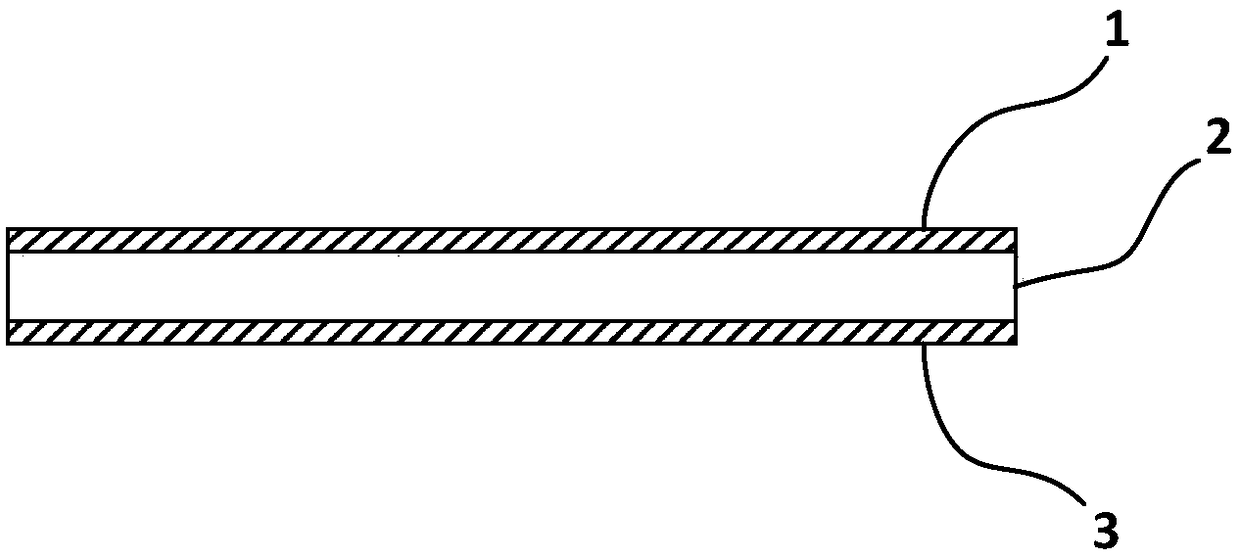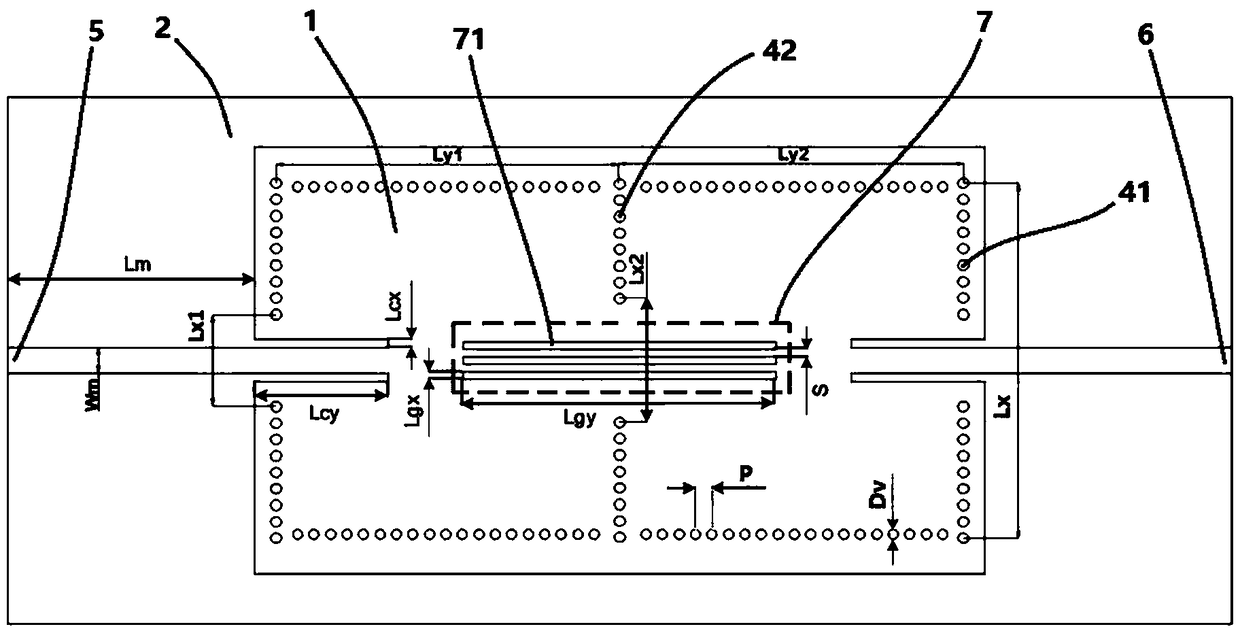A Controllable Hybrid Electromagnetic Coupling Substrate Integrated Waveguide Filter
A substrate-integrated waveguide and hybrid electromagnetic technology, which is applied to waveguide devices, circuits, electrical components, etc., can solve the problems of poor design flexibility and inability to realize controllable electromagnetic coupling, and achieve flexible design, simple structure, and applicable frequency wide range of effects
- Summary
- Abstract
- Description
- Claims
- Application Information
AI Technical Summary
Problems solved by technology
Method used
Image
Examples
Embodiment 1
[0046] figure 2 The size of each parameter in is: Wm=1.534mm, Lm=15mm, Lx1=2.8mm, Lx2=7.5mm, Lx3=2.8mm, Lcx=0.51mm, Lcy=8.1mm, Lgx=0.4mm, S=0.8mm , Lgy=18mm, Lx=16.34mm, Ly1=18.25mm, Ly2=18.25mm, D v=0.6mm, P=1mm, the dielectric substrate is Rogers5880, its dielectric constant is 2.2, the loss tangent is 0.0009, and the thickness is 0.508mm.
Embodiment 2
[0048] figure 2 The size of each parameter in is: Wm=1.534mm, Lm=15mm, Lx1=2.8mm, Lx2=7.5mm, Lx3=2.8mm, Lcx=0.51mm, Lcy=8.1mm, Lgx=0.43mm, S=0.86mm , Lgy=18mm, Lx=16.34mm, Ly1=18.25mm, Ly2=18.25mm, D v =0.6mm, P=1mm, the dielectric substrate is Rogers5880, its dielectric constant is 2.2, the loss tangent is 0.0009, and the thickness is 0.508mm.
Embodiment 3
[0050] figure 2 The size of each parameter in is: Wm=1.534mm, Lm=15mm, Lx1=2.8mm, Lx2=7.5mm, Lx3=2.8mm, Lcx=0.51mm, Lcy=8.1mm, Lgx=0.45mm, S=0.9mm , Lgy=18mm, Lx=16.34mm, Ly1=18.25mm, Ly2=18.25mm, D v =0.6mm, P=1mm, the dielectric substrate is Rogers5880, its dielectric constant is 2.2, the loss tangent is 0.0009, and the thickness is 0.508mm.
PUM
 Login to View More
Login to View More Abstract
Description
Claims
Application Information
 Login to View More
Login to View More - R&D
- Intellectual Property
- Life Sciences
- Materials
- Tech Scout
- Unparalleled Data Quality
- Higher Quality Content
- 60% Fewer Hallucinations
Browse by: Latest US Patents, China's latest patents, Technical Efficacy Thesaurus, Application Domain, Technology Topic, Popular Technical Reports.
© 2025 PatSnap. All rights reserved.Legal|Privacy policy|Modern Slavery Act Transparency Statement|Sitemap|About US| Contact US: help@patsnap.com



